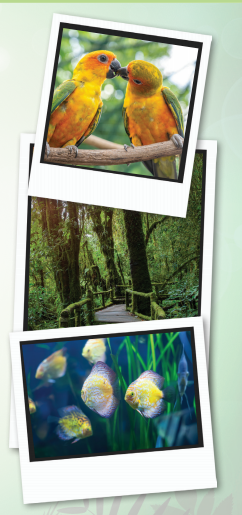Big Rainforests
Rainforests are forests that have a higher rainfall rate than other, regular forests. They are home to thousands of different animal and plant species. Every year, a rainforest gets between 250 and 450 centimetres of rain. There are two types of rainforests: tropical rainforest and temperate rainforest. Tropical rainforests have a warm and wet climate. They are located close to the equator. Places such as South America, Southeast Asia and Sub-Saharan Africa have very large rainforest areas. Temperate rainforests, however, are only found in few regions around the world such as Europe, North America and East Asia. In these areas, the climate is never too hot or too cold.
Around 40% to 75% of all animal and plant species are indigenous to the rainforests. This means that they have always lived in these areas; they have never been moved or replaced. Scientists think that there may be many millions of species of plants, insects and microorganisms which we still have not discovered in tropical rainforests. Tropical rainforests have been called the “jewels of the Earth” and “the world’s largest pharmacy”, because more than half of natural medicines have been discovered there. Rainforests are also responsible for 28% of the world’s oxygen turnover; that is why tropical forests are also called “Earth’s lungs.”
Rainforests produce many items that we all use in our daily lives. Tropical rainforests provide timber as well as animal products such as meat and leather. Other common rainforests products include chocolate, sugar, cinnamon, rubber, medicine, and pineapples. Rainforests also have value as tourism destinations.

